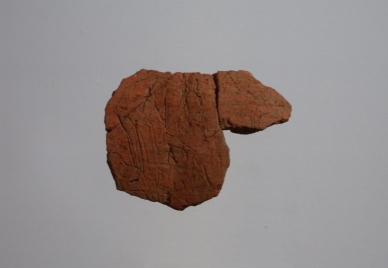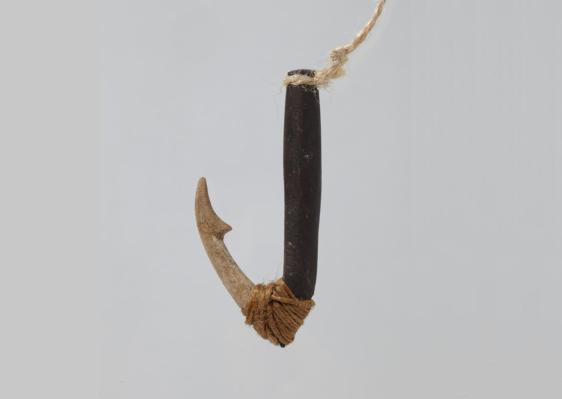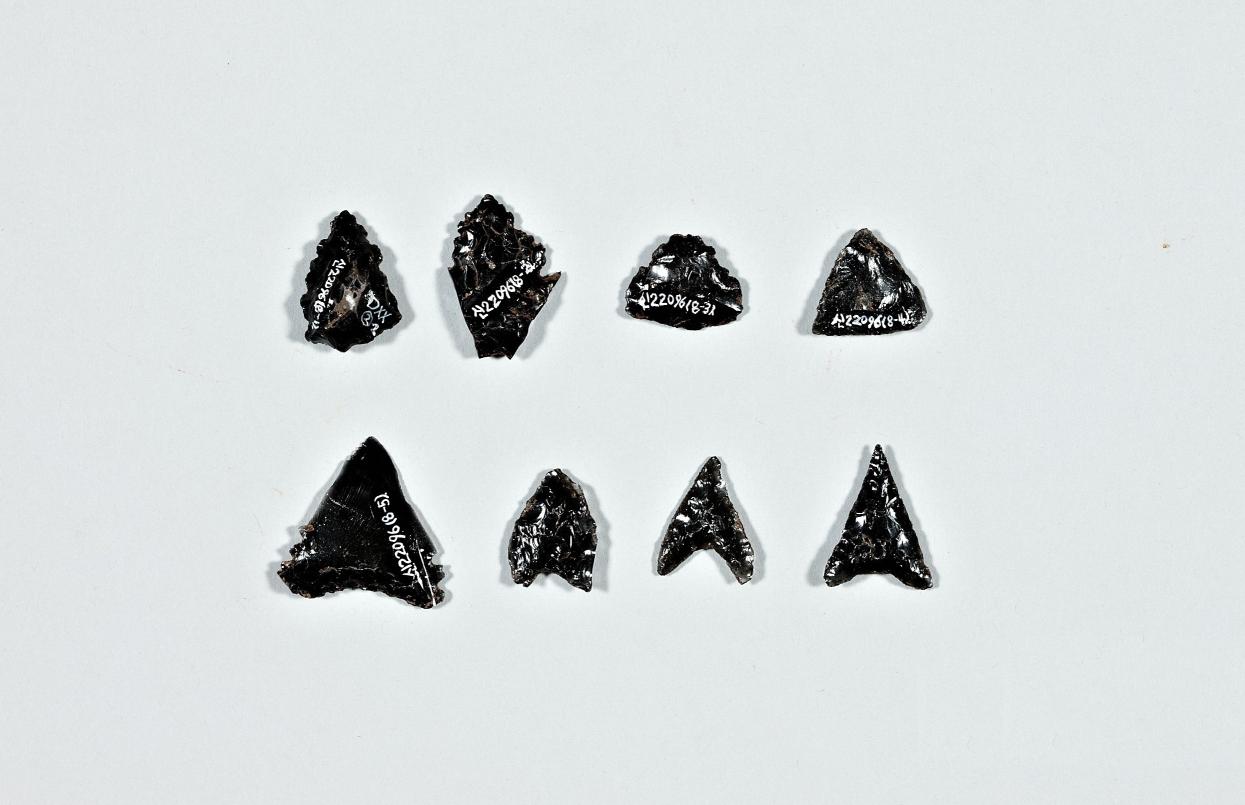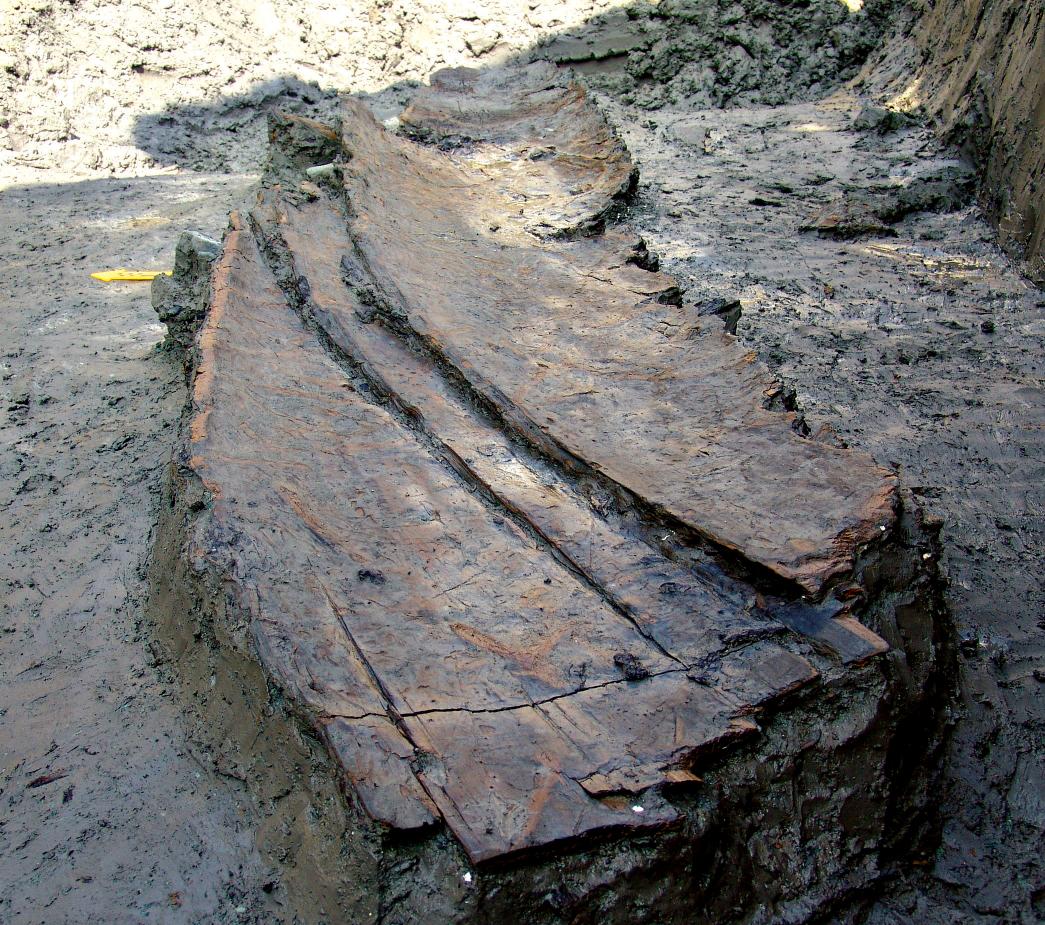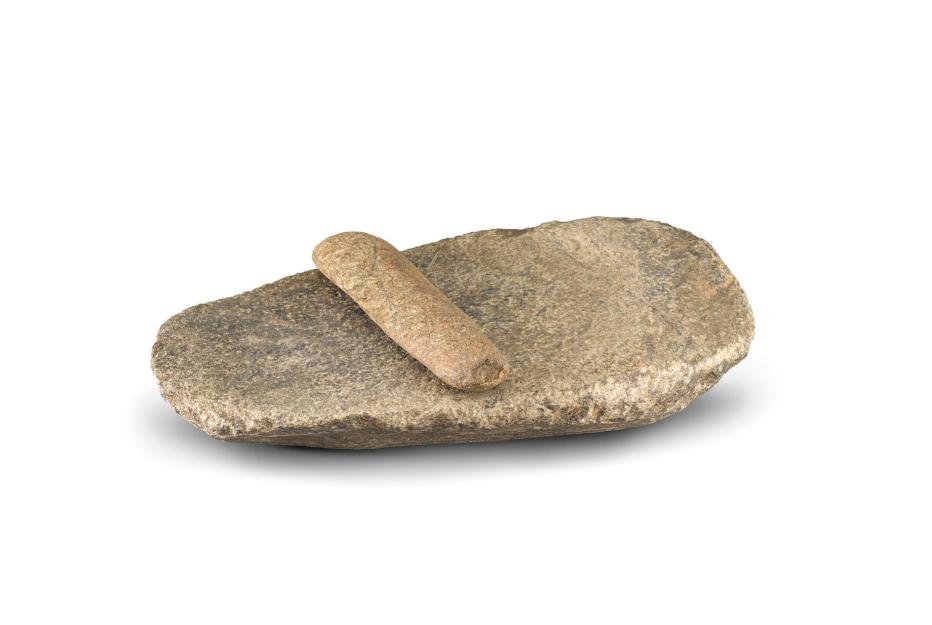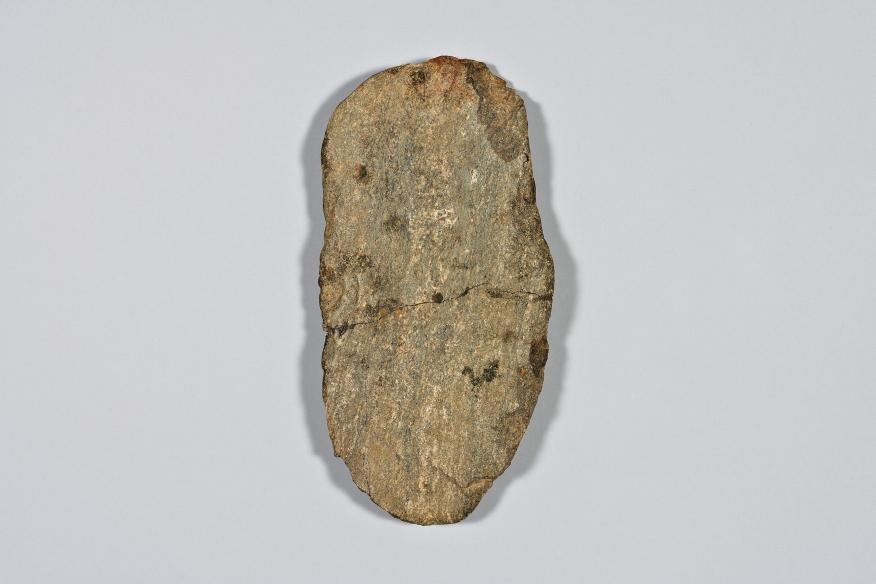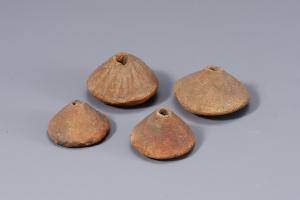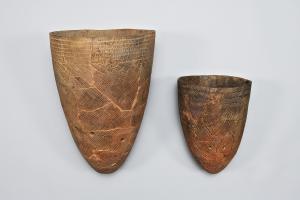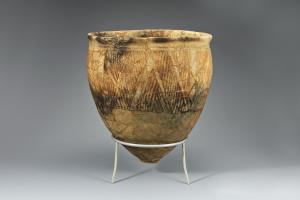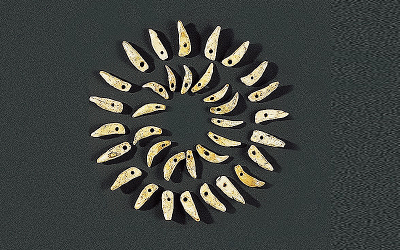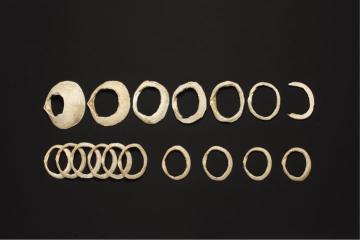-
선사·고대관 신석기

전시실 소개
-
- 신석기실에서는 빙하기가 끝나고 바뀐 환경에 적응하면서 정착 생활을 시작한 신석기시대 사람들의 생활상을 살펴볼 수 있다. 신석기시대가 시작되는 약 1만 년 전 무렵의 인류는 지구의 기온이 상승하여 물이 육지로 유입되면서, 바다 자원을 적극적으로 이용할 수 있게 되었다. 유적에서 출토된 낚싯바늘을 비롯한 다양한 어로 도구들로 당시의 어로 생활을 추정해 볼 수 있고 갈판, 갈돌, 괭이, 낫 등의 석기를 보면 신석기시대 사람들의 생계와 경제 활동 방법을 알 수 있다. 이곳에서는 시기와 지역에 따라 다양하게 만들어진 토기들을 비교해 볼 수 있으며, 꾸미개나 토우와 같은 예술품 등에서 신석기인의 정신세계도 엿볼 수 있다.
- 신석기시대에는 다양한 동식물 자원을 효과적으로 운반, 보관, 조리하기 위해 토기를 만들기 시작했으며, 새로운 도구 제작 기술도 나타났다. 신석기시대 유적은 주로 물과 자원을 쉽게 구할 수 있는 강변이나 바닷가, 육지로부터 가까운 섬 지역에 집중되어 있는데, 이로써 당시 사람들은 강가나 바닷가에 움집을 짓고 살면서 고기잡이, 사냥, 식물채집으로 먹을거리를 구했을 것으로 생각된다. 신석기시대에는 가축을 길렀으며 초보적인 농경도 시작했다. 또한 일본 열도, 중국 동북 지역, 러시아 연해주 등 주변 지역과 활발하게 교류하였다.
전시 동영상* 이 영상은 음향을 제공하지 않습니다.
8천년전 배를 발견하다
('8천년전 배를 발견하다'에 대한 대체텍스트입니다.)
8천 년 전 배를 발견하다 the discovery of a boat dating to 6,000 BCE
울주 대곡리 반구대 바위그림 the bangudae rock carving of daegok-ri, ulju
울주 대곡리 반구대 바위그림에서나 볼 수 있었던 선사시대 배 prehistoric boats depicted in the bangudae rock carving
그 배를 창녕 비봉리에서 발견하다. these boats were discovered at bibong-ri, changnyeong.
8천년 전 우리나라에서 가장 오래된 배다. these are the oldest boarts to have been found in korea and date to 6,000 BCE.
창녕 비봉리 1호 배 boat no.1
창녕 비봉리 유적에서 발견돼 두 척의 배는 모두 소나무를 깍아 만든 통나무배이다. the two boats discovered at bibong-ri, changnyeong, were built using pune tree logs.
신석기인들은 나무를 쉽게 깎고 벌레가 먹는 것을 막기 위해 불에 그을려 가며 다듬었다. neolithic people blackened the wood with fire in order to faciliate culting and prevent insect damage.
창녕 비봉리 유적 위치 the location of bibong-ri site
신석기인들은 배를 타고 바다를 누비며 물고기를 잡고 먼 지역의 사람들과 교류했다 neolithic communities roamed the seas in boats, and they fished and interacted with people from distant regions.
국립중앙박물관 자료제공 kbs 역사스페셜
신석기 시대의 무덤
('신석기 시대의 무덤'에 대한 대체텍스트입니다.)
신석기시대의 무덤 burials of the neolithic age
춘천 교동 동굴 gyo-dong cave, chuncheon
동굴이 무덤으로 사용되었다 a cave was used as a burial site
구덩이를 파고 시신을 넣은 움무덤이다 these are pit burials in which the deceased was interred within a put structure
7호 무덤의 남성은 돌고래, 너구리, 수달의 이빨로 만든 발찌를 차고 있었다 the male individual of burial no.7 wore an anklet made of animal teeth
부산 가덕도 유적 gadeokdo site, busan
현재까지 발견된 신석기시대 무덤 가운데 최대 규모이다 this is the largest burial cluster to have been identified for the neolithic age
커다란 피조개로 덮은 어린 아이 등 48기의 무덤에서 인골이 다양한 껴묻거리와 함께 발견되었다 the bones of deceased individuals were discovered along with various grave goods at 48 burials, including the remains of a child coverd with large ark shells
여수 안도 조개무지 ando shell mound, yeosu
1호 무덤에서는 30대 남성과 20대 여성 2구의 시신이 나란히 발견되었다 the remains of a male in his thirties and the remains of a female in her twenties were discovered side by side in burial no.1
3호 무덤에서는 조개 팔찌를 찬 시신이 발견되었다 the remains of an individual wearing shell bracelets were discovered in burial no.3
최소 40구 이상이 묻혔으며 남녀의 비율이 비슷하고 20대가 많았다 it was possibel to confirm that the remains represented least 40 different individuals. They were mostly in their twenties and the gender ratio was relatively equal
한반도에서 가장 이른 시기의 독널무덤이 발견되었다 the earliest jar coffin from the korean peninsula was discovered at dongsam-dong, busan
집터 안에서 토기를 세워 묻은 독널무덥이 발견되었다 jar coffins that were buried in standing positions were found within dweling structures
독널로 사용된 토기 바닥에는 구멍이 뚫려 있었고 a hole had been bored into the base of the vessel used as a jar coffin
토기 안에는 사람의 뼛조각이 담겨 있었다 the pottery vessel contained pieces of human bone
국립중앙박물관
신석기인의 살림집
('신석기인의 살림집'에 대한 대체텍스트입니다)
신석기인의 살림짐 the dwellings of neolithic communities
청도 오진리 바위그늘, ojin-ri rockshelter, cheongdo
신석기인들은 먹을거리를 찾아 돌아다니며 잠시 머물기위해 동굴, 바위그늘을 이용하기도하고 neolithic communities in search of food resources stayed temporanily at caves or rockshelters
야외 화덕 자리(부산 범방유적) outdoor hearths(beombang site, busan)
야회 화덕자리, 간단한 야영 시설을 만들기도 하였다 they bult outdoor hearths and simple camping facilities
서울 암사동 유적, amsa-dong site, seoul
그러나 신석기시대에는 비교적 오래 머물 수 있는 움집을 짓기 시작하였다 neolithic communities began to buled pit dwelings which were occupied for relatively longer periods of time
움집은 구덩이를 파고 기둥을 세운 다음 억새, 갈대 등으로 엮은 지붕을 얹었다. pit dwellings were bult by digging the floor space into the ground, erecting wooden posts and pulting up a roof made of grass and weeds
양양 오산리 유적 osan-ri site, yangyang
둥글거나 네 모서리를 죽인 네모꼴의 형태가 많고 집안 가운데에 돌이나 진흙으로 만든 화덕을 설치항쎠다 dwelling floors were often round or quadfrangle0shaped with blunt edges in plan, and a hearth made of stones or clay was placed at the center of the dwelling
안산 신길동 유적 singil-dong site, ansan
수렵, 채집, 어로와 더불어 농사짓기로 생활이 보다 안정되면서 마을도 형성되었다 vilages came to be formed as th lives of neolithic communities became relatively stable through hunting, gathering, fishing and farming
대전 관평동 유적 gwanpyeong-dong site, daejeon
움집이 긴 네모꼴로 커지기도 하고 출입구가 잘 만들어지기도 한다 larger, rectangular pit dwellings also came to be built and dwellings came to have well defined entrance features
마을에서는 토기를 굽는 가마나 석기를 만들었던 장소도 발견된다 locations where pottery was fired and stones tools were manufactured have also been identified an thease villages
국립중앙박물관
-
-
-
위치

-
선사·고대관
인류가 한반도에 살기 시작한 구석기시대부터 통일신라와 발해가 공존한 남북국시대까지 우리나라의 역사와 문화를 시간의 흐름에 따라 보여주는 통사적 전시 공간입니다.








 X
X  페이스북
페이스북 